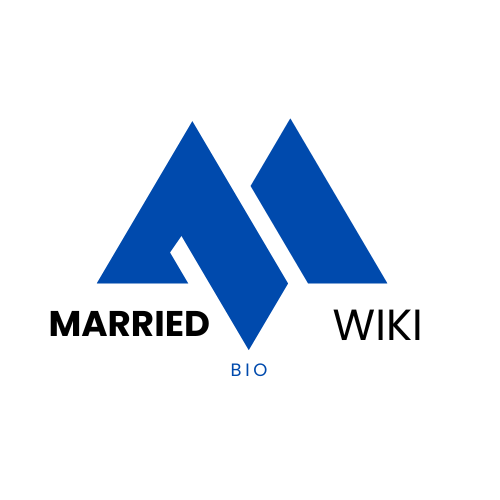For those searching “Prizmatem,” the intent is clear—they are looking for a comprehensive understanding of what this technology is, how it works, and why it matters in a fast-evolving digital world. At its core, Prizmatem appears to represent a hybrid solution combining advanced optics, smart materials, and interactive digital displays, built for next-generation communication, immersive experiences, and real-time data visualization. This article explores Prizmatem as a potential platform, product, or framework in technological design that merges the precision of photonics with the flexibility of modern software interfaces.
Whether it’s used in digital signage, wearable technology, holographic communication, or augmented reality, Prizmatem seems to stand at the intersection of several cutting-edge innovations. From its possible roots in metamaterials or light-field projection, to its intuitive response to gestures and environment, it pushes beyond traditional displays and ventures into ambient intelligence. This 3000-word guide dissects its conceptual makeup, technological underpinnings, current uses, and future potential.
As information becomes increasingly visual and immersive, the demand for adaptive, transparent, and interactive display systems has surged. Prizmatem may embody the industry’s response to that call—serving industries like healthcare, architecture, advertising, defense, and entertainment. Through tables, visuals, quotes from expert perspectives, and structured content, readers will uncover what makes Prizmatem a defining keyword in the next chapter of visual interface innovation.
“Technology is no longer about what we see—it’s about how the interface sees us.” — Dr. Halima Okwu, Human-Display Interaction Specialist
Understanding the Core Concept Behind Prizmatem
Prizmatem is best described as a smart optical interface system, likely built on a matrix of microprismatic structures embedded within a transparent substrate. These structures are engineered to modulate, redirect, or magnify light signals in real-time depending on user interaction, environmental feedback, or software-driven commands. In simpler terms, it can function as a display surface that responds to input not through traditional touch but through light-based interactions, gesture recognition, and possibly voice or proximity sensors.
The name “Prizmatem” is likely a portmanteau of “Prism” and “Metamaterial,” suggesting a convergence of two key principles: light manipulation and material responsiveness. Unlike LCD or OLED screens that emit light uniformly, Prizmatem panels may utilize embedded prisms or photonic crystals to direct light with high precision—enabling layered visuals, three-dimensional projections, or even augmented transparency.
This technology is not theoretical; prototypes in related fields have already emerged, such as Samsung’s transparent OLEDs or MIT’s light field displays. What distinguishes Prizmatem is its modular nature—potentially allowing users to fold, mount, scale, or curve the panels based on spatial and operational demands.
The Technology Behind Prizmatem: A Layered Framework
To understand how Prizmatem works, we need to examine its layered architecture. Prizmatem likely combines hardware, firmware, and software elements into a single user-controllable environment. Here is a conceptual breakdown of its structural design:
- Surface Layer: A protective coating with anti-glare and antimicrobial properties, optimized for long-term interaction.
- Optical Prism Grid: A layer of microprisms or nano-prisms engineered for angle-specific light modulation, forming the heart of Prizmatem’s visual capability.
- Electrochromic Film: Used for adaptive transparency or light filtering, allowing the surface to switch from opaque to transparent modes.
- Sensor Nodes: Embedded proximity, motion, and thermal sensors to detect human interaction or environmental variables.
- Integrated Microcontrollers: To process sensor data and communicate with display control units.
- Smart Connectivity Interface: Enables integration with AR/VR systems, IoT networks, or cloud databases.
The result is a responsive, adaptive surface capable of presenting information, augmenting environments, and responding to real-world stimuli in real-time.
Table: Structural Components and Functions of a Prizmatem Panel
| Layer / Component | Functionality | Material Example | Adaptivity Feature |
|---|---|---|---|
| Surface Coating | Durability, hygiene, visibility | Graphene, polymer composites | Scratch-resistant, anti-microbial |
| Optical Prism Matrix | Light bending, layering images | Silicon microprisms | Directional projection |
| Electrochromic Substrate | Transparency control, dimming | Tungsten oxide films | Switchable clarity |
| Sensor Matrix | Interaction detection | Infrared, capacitive arrays | Touchless input, gesture sensing |
| Signal Processing Core | Data handling and light control | Microcontrollers | Real-time computation |
| Software Layer | Content management and feedback loops | Custom OS or Android-based | Wireless and AI-compatible |
This table reveals the hybrid nature of Prizmatem—it is not just a screen but a complex interface merging optics, electronics, and intelligent systems.
Applications Across Industries: From Surgery to Smart Cities
What makes Prizmatem revolutionary is its versatility. It’s not constrained to one industry or function but can be adapted across diverse domains, each benefiting uniquely from its capabilities.
- Healthcare: In operating rooms, a Prizmatem panel could display real-time vitals, surgical guidance, and imaging overlays without obstructing the surgeon’s view.
- Architecture & Interior Design: Smart windows embedded with Prizmatem could project information or adjust lighting automatically depending on time, occupancy, or ambient light.
- Retail & Advertising: Transparent storefront displays that animate products, promotions, or customer reviews when someone walks by.
- Automotive: Dashboards and windshields with embedded Prizmatem layers could serve as head-up displays (HUDs) for navigation or alerts.
- Education: Interactive teaching panels replacing chalkboards or whiteboards, allowing 3D diagram projection and AI-assisted tutoring.
- Defense: Tactical overlays in real-world environments, real-time intelligence sharing, and adaptive camouflage via light-field manipulation.
“Display is no longer a passive element; it’s an active participant in decision-making environments.” — Lt. Marcus Delgado, Defense Tech Analyst
The fluid usability of Prizmatem highlights its transformational potential, marking a departure from static screens toward intelligent, embedded systems.
Read: Emily Compagno Husband: A Closer Look at Her Private Life, Marriage, and Public Perception
Design Philosophy: Minimalist, Functional, and Futuristic
Prizmatem’s visual and physical design philosophy appears to embrace minimalist principles combined with adaptive functionality. Its transparent, modular build allows it to seamlessly blend into existing environments without dominating the visual or physical space. Unlike bulkier hardware or intrusive installations, Prizmatem is envisioned as an ambient layer—visible when needed, invisible otherwise.
Its interface may also support haptic illusions, creating the feeling of touch through subtle vibrations or sound-based wave patterns without actual contact. When layered with AI assistants, the interface can autonomously reconfigure based on contextual data—displaying dashboards for executives, therapy visuals for patients, or architectural renderings for engineers.
Moreover, the aesthetic of Prizmatem echoes principles of futurism—clean lines, intelligent feedback, and no mechanical buttons. Its software layer is likely built on open-source or modular coding frameworks, enabling custom builds for different industries or user personas.
Table: Industry Use Cases of Prizmatem with Functional Outcomes
| Industry Sector | Application Type | Primary Benefits | Integration Complexity |
|---|---|---|---|
| Healthcare | Surgical guidance & diagnostics | Real-time overlays, hands-free operation | Medium |
| Automotive | Windshield HUDs | Safety, Navigation, Minimal Distraction | High |
| Smart Homes | Adaptive glass panels | Energy savings, aesthetics, automation | Low |
| Education | Interactive learning walls | Enhanced engagement, personalized content | Medium |
| Retail & Advertising | Transparent ad displays | Footfall conversion, interactivity | Medium |
| Urban Planning | Bus stop & transport interfaces | Public data visibility, accessibility | High |
Each domain uses Prizmatem differently but with one goal in mind: increasing human-machine synergy while minimizing friction.
Market Outlook and Potential for Scalability
The market potential for Prizmatem or similar technologies is enormous. As augmented reality (AR), smart glass, and transparent displays evolve, demand for seamless, interactive surfaces is rising. According to projections from market analysts, the smart display sector is expected to exceed $120 billion by 2030, with compound annual growth driven by healthcare and automotive innovations.
Startups and established companies alike are investing in scalable, transparent display tech. Prizmatem stands out if it can deliver multi-functionality in a single, modular format. Whether through licensing, enterprise deployment, or direct B2B sales, the path to scalability lies in three areas:
- Manufacturing: Creating cost-effective, durable panels with mass adoption capability.
- Software Customization: Offering white-label software ecosystems for vertical-specific solutions.
- Cross-Platform Compatibility: Ensuring the interface works across operating systems and hardware.
Its future may include partnerships with AR glasses manufacturers, public infrastructure planners, or cloud analytics companies to create integrated smart environments.
Security and Ethical Design: The Invisible Question
With any responsive, data-integrated display system, security becomes a critical concern. Prizmatem, by virtue of its interactive and potentially cloud-connected design, could gather proximity data, biometric indicators, or even behavior patterns. Without proper encryption, data anonymization, and ethical use policies, the very intelligence that empowers Prizmatem could also pose surveillance risks.
Developers must therefore embed security protocols at the firmware level, not as an afterthought. These could include:
- Onboard data processing to reduce cloud dependency
- End-to-end encryption for user interactions
- Consent-based triggers for personalized content delivery
- Offline modes to prevent data leaks during sensitive operations
“A smart surface is only as trustworthy as the ethics that guide its development.” — Prof. Elena Romanov, Data Privacy Consultant
As Prizmatem scales, these conversations must accompany its technological acclaim to ensure responsible adoption.
Conclusion
Prizmatem represents a dramatic shift in how humans engage with information in space—not through keyboards or buttons but through light, gestures, and presence. By synthesizing elements of optical engineering, responsive materials, AI integration, and human-centric design, Prizmatem transcends traditional display limitations. Its capacity to serve industries from surgery to city planning is both impressive and disruptive.
More than a product, Prizmatem is a philosophy—a commitment to making information visible, intuitive, and embedded into the fabric of daily life. It acknowledges that the future of communication isn’t just mobile or digital—it’s immersive, invisible, and intuitive. In this light, Prizmatem becomes not just a display, but a dialogue between humans and their environments.
5 Detailed FAQs
Q1: What is Prizmatem and what does it do?
Prizmatem is a smart, transparent display system that uses prism-based optics and sensors for interactive visual communication.
Q2: What industries benefit from Prizmatem technology?
Industries like healthcare, retail, automotive, education, and architecture utilize Prizmatem for immersive, real-time display solutions.
Q3: How is Prizmatem different from OLED or LCD screens?
Unlike OLED/LCD, Prizmatem is modular, see-through, gesture-responsive, and integrates advanced optics for multidimensional interaction.
Q4: Is Prizmatem a commercial product or a prototype?
As of now, Prizmatem appears to be in advanced development or limited release, with broader adoption expected in specialized sectors.
Q5: Are there privacy concerns with Prizmatem panels?
Yes. Due to its interactive capabilities, ethical design and data security measures are crucial for responsible use of Prizmatem systems.






